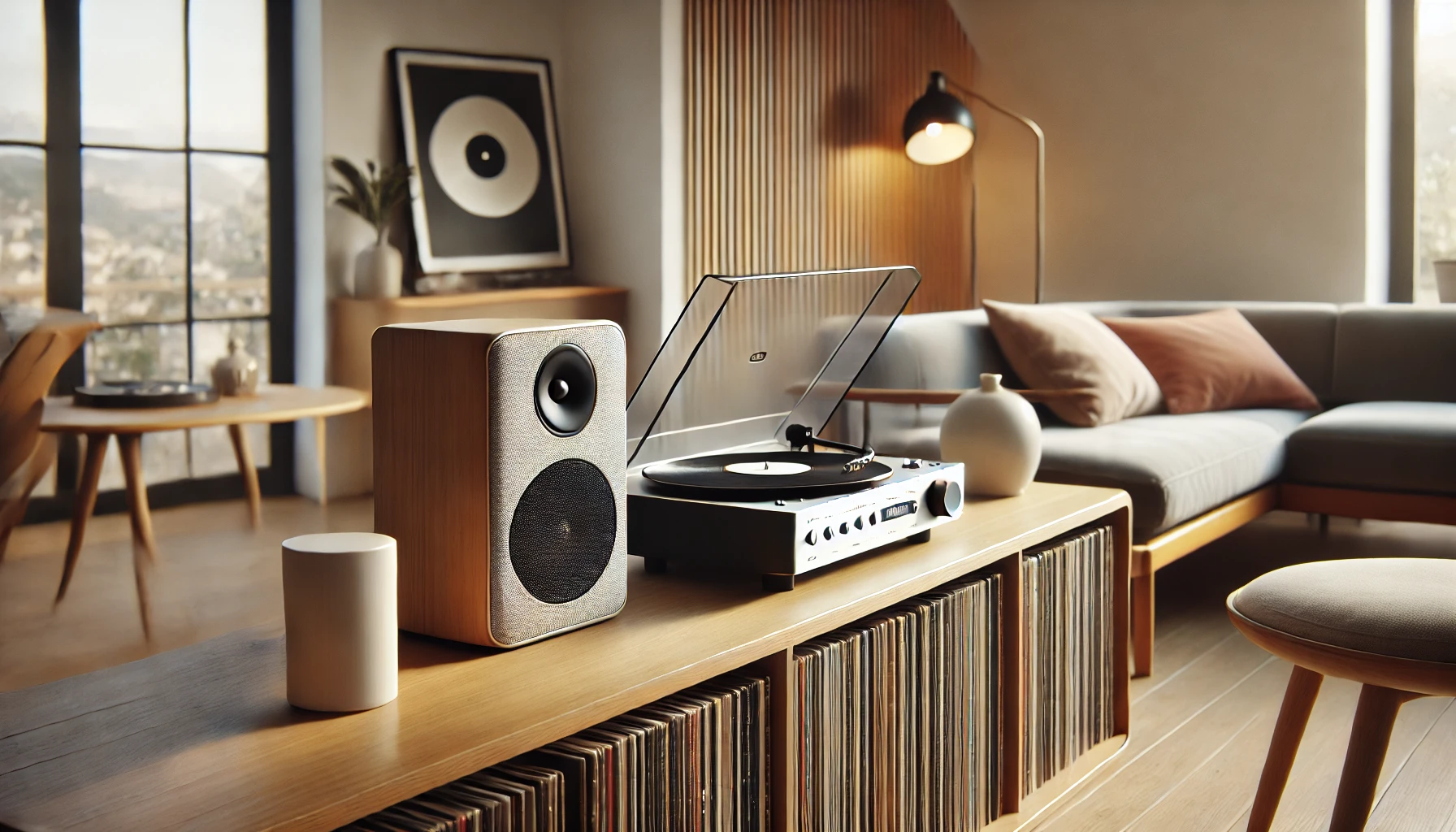Imagine the warm, rich sound of vinyl combined with the convenience of wireless streaming – that’s the magic of Bluetooth record players!
As a lifelong vinyl junkie and tech enthusiast, I’ve been fascinated by how these gadgets blend the best of both worlds. Stick with me, and I’ll walk you through the ins and outs of these modern marvels that are breathing new life into our beloved vinyl collections.
How Does A Bluetooth Record Player Work?
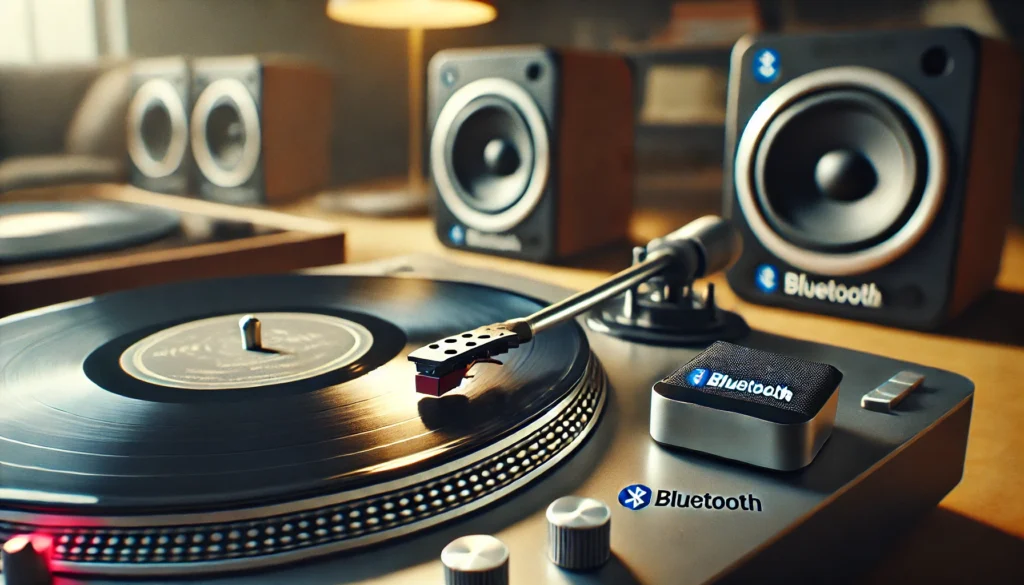
As a vinyl enthusiast and tech geek, I’ve spent countless hours tinkering with Bluetooth record players.
Here’s the lowdown: A Bluetooth record player works by combining traditional turntable technology with a Bluetooth transmitter. It plays your vinyl records as usual, but instead of connecting to speakers with wires, it sends the audio signal wirelessly to Bluetooth-enabled speakers or headphones.
This clever combo lets you enjoy the classic vinyl experience with modern convenience. Stick around, and I’ll dive deeper into the fascinating world of Bluetooth record players!
The Components of a Bluetooth Record Player
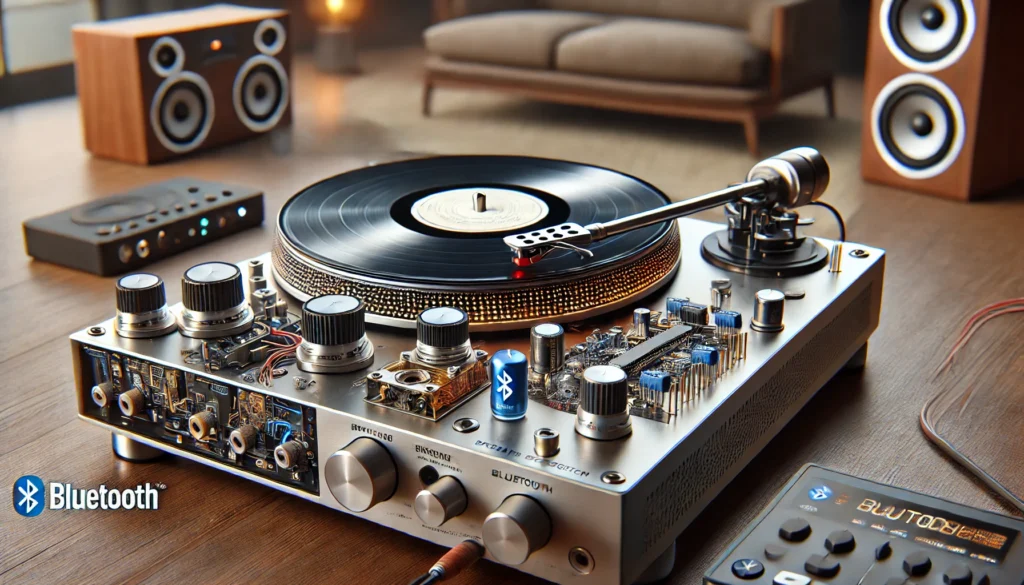
Let me break down the key parts of a Bluetooth record player for you.
Trust me, I’ve taken apart more of these than I care to admit (much to my wife’s chagrin)!
First up, you’ve got your basic turntable mechanism. This is the heart of the operation – a platter that spins your records at just the right speed.
I remember the first time I saw one of these in action as a kid. It was like magic!
Next, there’s the cartridge and stylus. These little guys are the unsung heroes of vinyl playback.
The stylus (that’s the needle to us regular folks) rides those tiny grooves in your record like a microscopic surfer, picking up all those sweet, sweet vibrations.
Now, here’s where things start to get techy – the preamp. This bad boy takes those tiny electrical signals from the cartridge and beefs ’em up so they’re strong enough to be heard.
Without it, your tunes would be quieter than a mouse in church!
The star of the show in a Bluetooth record player is, you guessed it, the Bluetooth transmitter. This nifty piece of tech takes that amplified signal and broadcasts it wirelessly to your speakers or headphones.
It’s like a tiny radio station just for your vinyl!
Finally, you’ve got your control panel. This is where you work your magic – start and stop the platter, adjust the speed, and most importantly, pair with your Bluetooth devices.
I’ve fumbled with more of these than I care to admit, especially after a glass of wine or two!
The Vinyl Playback Process
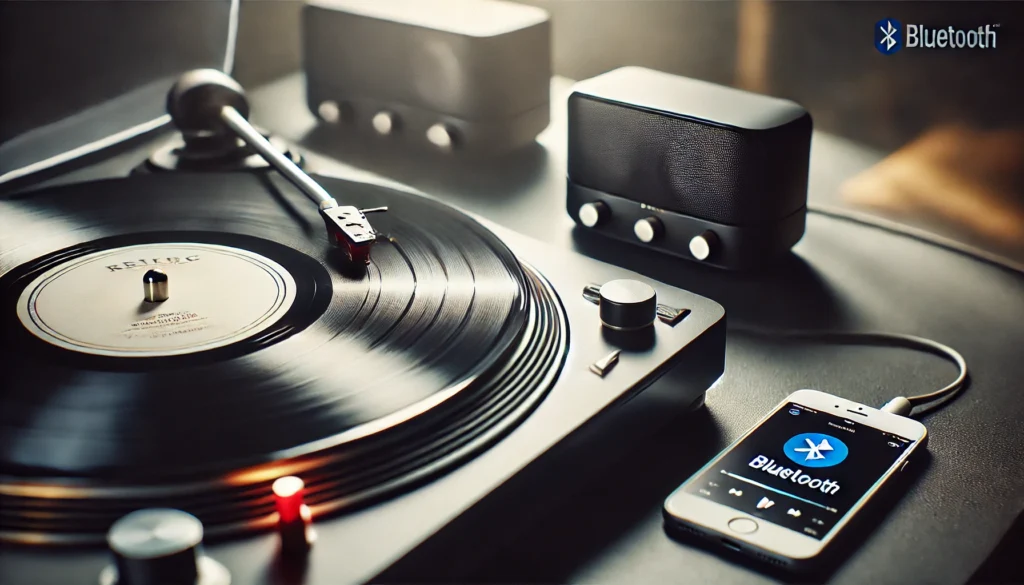
Alright, let’s get into the nitty-gritty of how these babies actually play your records.
It’s a process that never fails to amaze me, even after all these years.
So, you drop your favorite LP onto the platter, and the magic begins. The record starts spinning – 33 1/3 RPM for most albums, but some oldies might need 45 or even 78 RPM.
(Pro tip: make sure you’ve got the speed right, or you’ll end up with some funky-sounding tunes!)
As the record spins, that stylus I mentioned earlier starts tracking the grooves. It’s like a tiny explorer, following the path laid out in the vinyl.
Every bump and dip in those grooves represents the sound waves of your music. Pretty cool, huh?
Now, here’s where it gets really interesting. Those mechanical vibrations from the stylus get converted into electrical signals by the cartridge.
It’s like translating the language of the grooves into something your audio system can understand.
But wait, there’s more! Those electrical signals are pretty weak at this point. That’s where our friend the preamp comes in.
It boosts those signals, making them strong enough to be heard. Without this step, you’d be straining to hear anything at all!
Finally, we get to the Bluetooth part. Once the signal is nice and strong, the Bluetooth transmitter takes over.
It packages up that audio signal and sends it out into the ether, ready to be picked up by your wireless speakers or headphones.
And voila! Just like that, you’re listening to the warm, rich sound of vinyl, without a wire in sight.
It still blows my mind every time I think about it!
Bluetooth Technology in Record Players
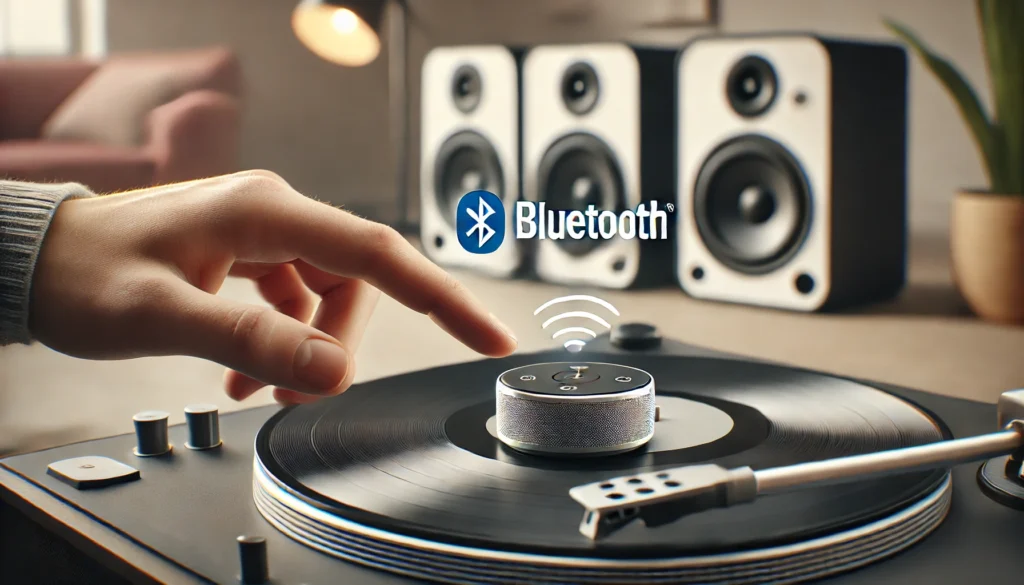
Now, let’s talk about the real game-changer here – Bluetooth technology.
This is what sets these record players apart from your grandpa’s old turntable (no offense, Gramps).
Bluetooth record players typically use Bluetooth 4.0 or newer protocols. These newer versions are a real step up from the early days of Bluetooth.
They offer better sound quality and more stable connections. Trust me, I remember the days of constant dropouts and static – not fun!
The pairing process is usually pretty straightforward. You put your speakers or headphones in pairing mode, hit the pairing button on your record player, and boom – you’re connected!
Of course, there’s always that one stubborn device that refuses to pair. I swear, I’ve nearly thrown a few out the window in frustration!
When it comes to range, most Bluetooth record players can transmit up to about 33 feet (10 meters) without obstacles. But let’s be real, who’s listening to their records from that far away?
I like to be close enough to smell the vinyl (weird, I know, but don’t knock it till you’ve tried it).
One cool thing about these players is that many of them offer multiple connectivity options. So if you’re feeling old school, you can still hook up your wired speakers.
It’s like having the best of both worlds!
Advantages of Bluetooth Record Players
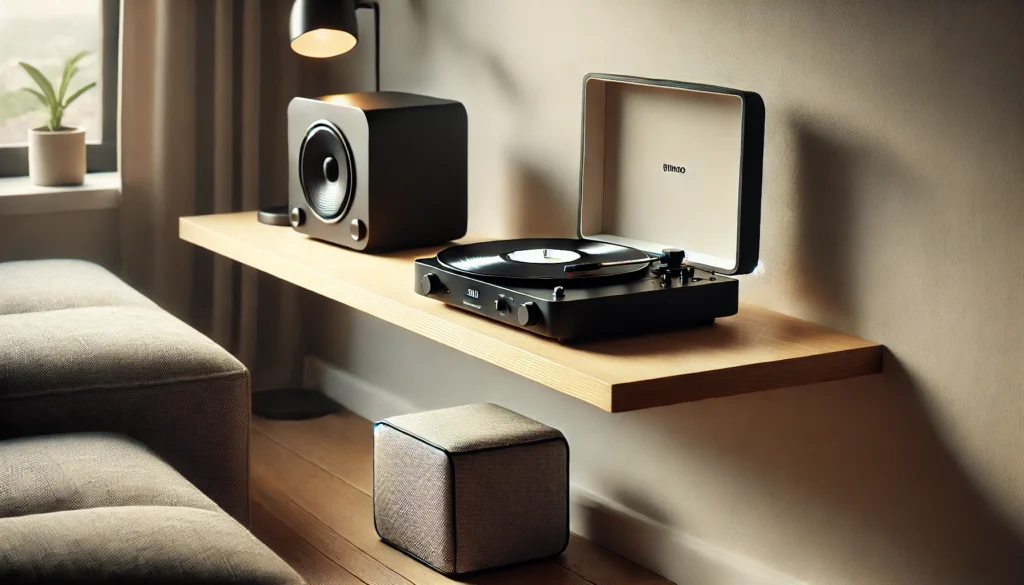
Let me tell you, Bluetooth record players have some serious perks.
I’ve been using one for a few years now, and I’m still discovering new things to love about it.
First off, the wireless convenience is a game-changer. No more tripping over speaker wires or trying to figure out which cable goes where.
I can’t tell you how many times I’ve nearly face-planted trying to change a record on my old setup!
Another big plus is compatibility with modern audio systems. Got a fancy new Bluetooth soundbar?
No problem! Want to listen on your wireless headphones? Easy peasy!
It’s like your vinyl collection suddenly learned to play nice with all your other tech.
Space-saving is another huge advantage. Without all those wires, you can set up your turntable pretty much anywhere.
I’ve got mine on a floating shelf, and it looks slick as hell.
And let’s not forget about portability. Some Bluetooth record players are designed to be taken on the go.
Vinyl picnic in the park, anyone? Just be careful – I learned the hard way that sand and record players don’t mix!
Potential Drawbacks and Solutions
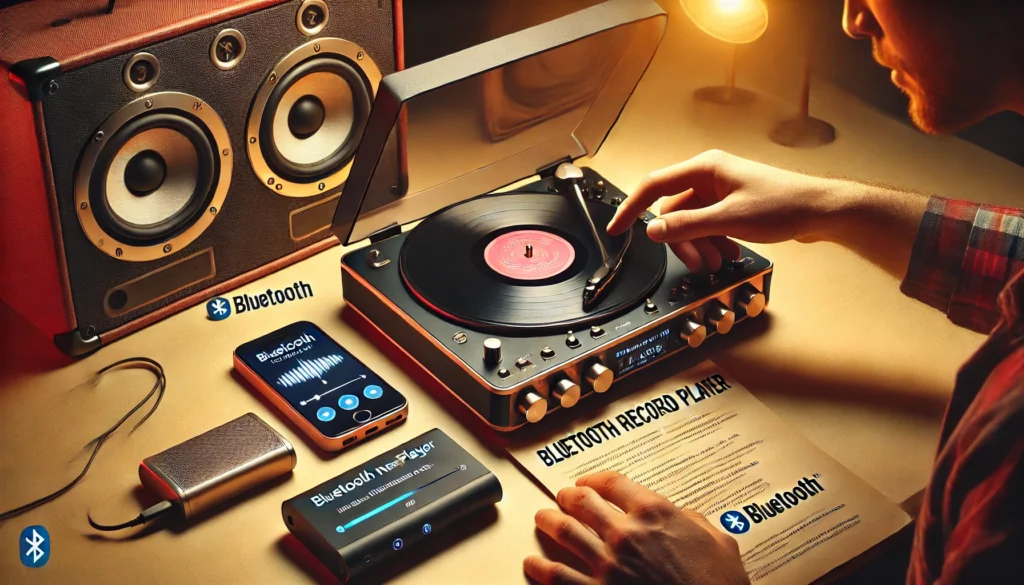
Now, I’ll be straight with you – Bluetooth record players aren’t all sunshine and rainbows.
They’ve got their quirks, but don’t worry, I’ve got some tips to help you out.
First up, let’s talk audio quality. Some audiophiles argue that Bluetooth compression can affect sound quality.
And yeah, if you’re really picky, you might notice a difference. But for most of us casual listeners, the convenience far outweighs any minor loss in quality.
Plus, with newer Bluetooth codecs like aptX, the difference is getting smaller all the time.
Latency can be an issue with some setups. You might notice a slight delay between the needle dropping and the sound coming out of your speakers.
It’s usually not a big deal, but if it bugs you, look for players and speakers that support low-latency Bluetooth codecs.
For portable models, battery life can be a concern. Nothing worse than your tunes cutting out mid-song!
I always make sure to keep mine charged, and I carry a power bank just in case. Better safe than sorry, right?
If you run into pairing problems (and trust me, we all do), try the old “turn it off and on again” trick.
Works like a charm most of the time. And if all else fails, don’t be afraid to consult the manual.
I know, I know, reading instructions feels like admitting defeat, but sometimes it’s necessary!
Choosing the Right Bluetooth Record Player
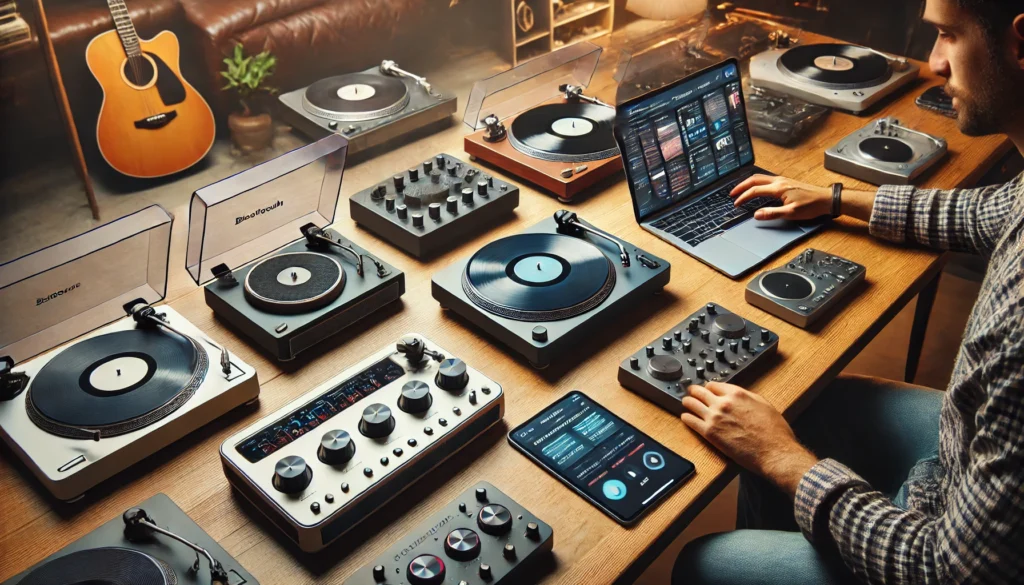
Alright, so you’re sold on the idea of a Bluetooth record player.
But how do you choose the right one? Don’t worry, I’ve been through this rodeo a few times, and I’ve got some tips for you.
First off, look for key features like Bluetooth version (newer is generally better), motor type (belt-drive for less noise, direct-drive for more accurate speeds), and additional connectivity options.
Trust me, you’ll appreciate having the flexibility to connect to different devices.
When it comes to brands, there are some solid options out there. Audio-Technica, Sony, and Pro-Ject all make great Bluetooth turntables.
But don’t just take my word for it – do your research and read user reviews. Real-world experiences can tell you a lot more than a spec sheet.
Price-wise, you’re looking at anywhere from $100 for a basic model to over $1000 for high-end audiophile gear. My advice?
Start in the middle range if you’re serious about sound quality but don’t want to break the bank. You can always upgrade later if you catch the vinyl bug bad (and trust me, it’s contagious).
One last tip: pay attention to the cartridge quality. A good cartridge can make a world of difference in sound quality.
I learned this the hard way after suffering through months of subpar sound before finally upgrading my cartridge. What a difference!
Conclusion
Whew! We’ve covered a lot of ground, haven’t we?
From the inner workings of these modern marvels to the pros and cons of wireless vinyl playback, we’ve taken a deep dive into the world of Bluetooth record players.
As we wrap up, I can’t help but get excited about the future of this technology. We’re seeing more and more innovative features hitting the market, like turntables with built-in streaming capabilities and even smart home integration.
Imagine telling your virtual assistant to drop the needle on your favorite album – the future is now, folks!
But at the end of the day, what really matters is the music. Whether you’re a die-hard vinyl enthusiast or just dipping your toes into the world of analog audio, Bluetooth record players offer a unique blend of classic sound and modern convenience.
So go ahead, dust off those old records, fire up your Bluetooth speakers, and lose yourself in the warm, rich tones of vinyl.
And hey, if you’ve got any cool experiences with Bluetooth record players, drop a comment below. I’d love to hear your stories!
Remember, in the world of audio, there’s always something new to discover.
So keep exploring, keep listening, and most importantly, keep the music playing. Rock on, vinyl lovers!
